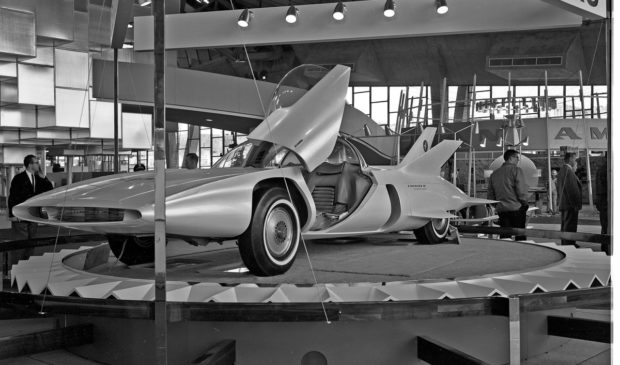Robot car revolution could usurp tens of millions of dollars from city coffers
Friday, August 4, 2017 by
Caleb Pritchard With no cars to park, whither the parking fees?
That question is one of many that the city of Austin will have to answer as it prepares for a possible future where personal car ownership is replaced by shared fleets of fully automated electric vehicles.
“This is not a problem tomorrow,” Austin Transportation Director Rob Spillar told the Austin Monitor on Thursday. “But I would argue that within the next 10 years it will become an issue we need to be watchful of.”
According to numbers recently compiled by Governing Magazine, the city collects more than $36.6 million in receipts from parking fees, fines, traffic citations and other vehicle-related assessments.
In arguably the most transformative scenario involving self-driving cars, ownership would be a thing of the past. Instead, the vehicles would constantly patrol city streets much as taxis do today, picking up and dropping off passengers on demand. During off-peak hours, superfluous vehicles could relocate to dedicated parking facilities on the outskirts of town.
That model would vaporize the need for drivers to store their vehicles on downtown streets or in garages when they visit the district’s many attractions, which could shrivel a significant source of city money. In 2016, the Austin Transportation Department collected $15.8 million in revenue from parking fees and fines, according to Governing. That totals more than a quarter of the department’s operating budget of $43.28 million that same year.
Nonetheless, Spillar believes the change would be gradual as late adopters who insist on using their own vehicles fill the vacuum.
“For a while it will roll. It won’t appear as a problem,” he said, before adding ominously: “Just like nobody thought not increasing the gas tax was ever going to be a problem.”
But parking won’t be the only potential budget crater created by robot cars. The city also raked in $19.7 million from traffic citations and red light camera tickets. Vehicles guided by the law-abiding precision of laser-guided computers would theoretically make human recklessness a thing of the past, thus confining to the ash heap of history speeding tickets, DWIs and blocking-the-box violations.
“The first step in a solution is actually admitting you might have a problem,” Spillar said, acknowledging with a chuckle that he doesn’t yet have any firm answers to the potential puzzle created by autonomous vehicles. However, City Council passed a resolution in March directing ATD and city staff to begin preparing for the shared robot car scenario. To that end, Spillar said his department will soon hire a new assistant director who will focus specifically on automated and electric vehicle policy. In addition to the potential revenue hit, the assistant director will also explore other potential contingencies such as the impact on the taxi industry and how road infrastructure will be affected.
Some experts believe that pedestrians, emboldened by cars programmed to stop for them no matter what, would require investments to separate the vehicles from pedestrians and bicyclists.
Spillar acknowledged that potential problem but suggested grade separations or other physical barriers aren’t the solution. Rather, he pointed to a reconfiguration of elements already common to Austin’s streets.
“We’ll still need signals, I think, to meter the pedestrians and keep them behaving right,” Spillar explained. In that scenario, citations against scofflaw pedestrians could in part replace those against speeding drivers.
Of course, the predictions for when entirely self-driving cars will fill city streets – if they do at all – range from mere years to entire decades. For his part, Spillar hedged, only guaranteeing that it will happen in his lifetime.
“When we as a country stepped into the Space Race, we didn’t know where it would go. That’s sort of where we are. We’re on the verge of a whole new frontier,” he said. “It’s bizarre, but it will be fun.”
Photo by Seattle Municipal Archives [CC BY 2.0], via Wikimedia Commons.
The Austin Monitor’s work is made possible by donations from the community. Though our reporting covers donors from time to time, we are careful to keep business and editorial efforts separate while maintaining transparency. A complete list of donors is available here, and our code of ethics is explained here.
You're a community leader
And we’re honored you look to us for serious, in-depth news. You know a strong community needs local and dedicated watchdog reporting. We’re here for you and that won’t change. Now will you take the powerful next step and support our nonprofit news organization?









